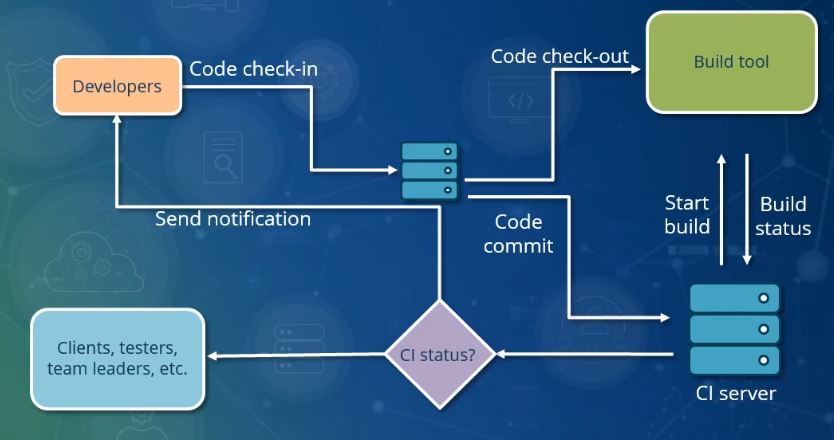Agile project management
- Introduction to Agile Project Management
- Agile Mindset and Agile Manifesto
- Agile Leadership
- Agile Methodologies and Frameworks
- Building an Agile Team
- Agile Planning and Estimation
- Executing Agile Projects
- Agile Quality Assurance
- Value-Driven Development
- Agile Contracting and Governance
- Agile Transformation and Scaling
- Case Studies and Best Practices
Agile Quality Assurance
Continuous Integration and Continuous Deployment in Agile Quality Assurance

Software development practice based on frequent submission of granular changes.
Continuous Integration (CI) and Continuous Deployment (CD) are two critical practices in Agile Quality Assurance. They are designed to ensure that software development teams can deliver high-quality software quickly and efficiently.
Introduction to Continuous Integration (CI) and Continuous Deployment (CD)
Continuous Integration is a development practice where developers integrate code into a shared repository frequently, preferably several times a day. Each integration is then automatically verified by an automated build and automated tests. The primary goal of CI is to catch and address bugs quicker, improve software quality, and reduce the time it takes to validate and release new software updates.
Continuous Deployment, on the other hand, is a software development practice where every code change goes through the entire pipeline and is put into production automatically, resulting in many production deployments every day. It is an extension of continuous integration, aiming at minimizing lead time, the time elapsed between development writing one new line of code and this new code being used by live users, in production.
The Role of CI/CD in Agile Quality Assurance
In Agile Quality Assurance, CI/CD plays a crucial role. It allows for the frequent release of small, incremental changes to software, which aligns with the Agile principle of iterative development. By integrating and deploying continuously, teams can ensure that each change is working as expected and that the quality of the software is maintained throughout its development.
The Process of CI/CD: Build, Test, Deploy
The CI/CD process can be broken down into three main stages: Build, Test, and Deploy.
-
Build: In this stage, the code is compiled, and the software is built. Any dependencies are also resolved in this stage. The build stage is crucial for catching any issues early in the process before they become more significant problems.
-
Test: After the build stage, the software is tested. This can involve unit tests, integration tests, and functional tests. The goal of the testing stage is to catch any bugs or issues that were not caught during the build stage.
-
Deploy: Once the software has been built and tested, it is deployed. In a CD environment, this deployment is automatic. The software is released into the production environment, where it can be used by end-users.
Tools for Implementing CI/CD
There are many tools available that can help teams implement CI/CD. Some of the most popular include:
-
Jenkins: An open-source tool that provides support for building, deploying, and automating any project. It integrates with virtually any tool in the CI/CD toolchain.
-
Travis CI: A hosted continuous integration service used to build and test software projects hosted on GitHub and Bitbucket.
-
CircleCI: A CI/CD tool that supports rapid software development and publishing. It integrates closely with GitHub, Bitbucket, and other version control systems.
-
GitLab CI/CD: A part of GitLab that provides a robust framework for continuous integration and deployment.
In conclusion, Continuous Integration and Continuous Deployment are vital practices in Agile Quality Assurance. They help teams maintain high software quality, catch bugs early, and align with the Agile principle of iterative development.